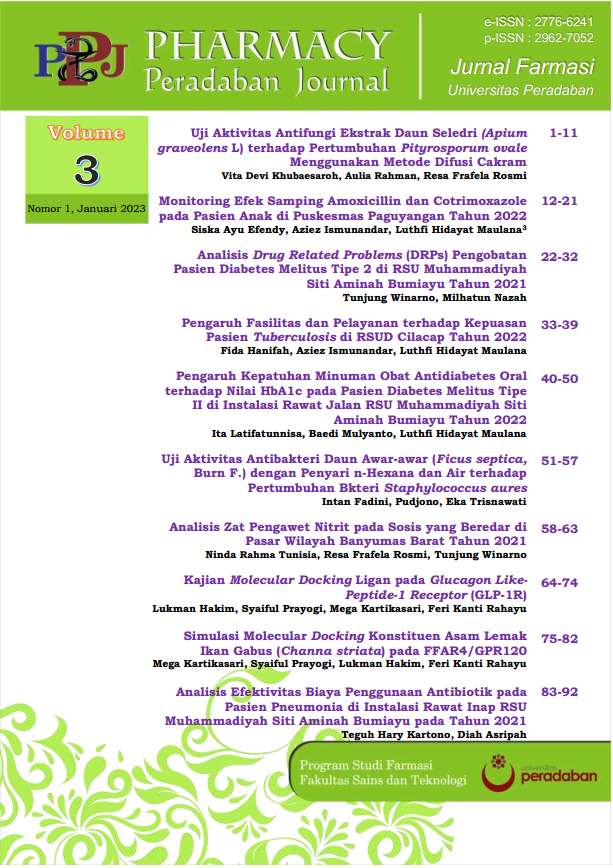THE RELATIONSHIP OF COMPLIANCE WITH TAKING ORAL ANTIDIABETIC DRUGS TO HBA1C VALUES IN TYPE II DIABETES MELLITUS PATIENTS IN THE OUTPATIENT INSTALLATION OF MUHAMMADIYAH SITI AMINAH BUMIAYU HOSPITAL IN 2022
Abstract
Diabetes mellitus is a complex chronic disease characterized by hyperglycemia. The International Diabetes Federation (IDF) shows that in 2015 there were 415 million adults with diabetes and there was a fourfold increase from 108 million in the 1980s. In 2040 it is predicted that the number will increase to 642 million people (Kemenkes RI, 2018). Compliance in taking medication is needed to support the success of patient therapy and ensure stable blood glucose levels are controlled so that they can achieve the target of successful patient compliance in undergoing treatment. The measurement of the HbA1c value is the most effective index of adherence of DM patients. HbA1c levels >6.5% indicate the level of compliance of DM patients in controlling blood sugar levels is considered not good (Puspitasari, 2012). Based on information from health workers, diabetes mellitus patients who come to the hospital when they are sick but they do not know about drug therapy adherence which is a problem that greatly affects the incidence of patients, so it is necessary to research the relationship between adherence to taking oral antidiabetic drugs with HbA1c values in diabetic patients. mellitus type 2 at Muhammadiyah Hospital Siti Aminah Bumiayu. This type of research is analytic observational using a cross sectional design. The study was conducted at Muhammadiyah Hospital Siti Aminah Bumiayu in April-May 2022. The population of this study was type 2 diabetes mellitus patients who underwent treatment at the outpatient installation of Muhammadiyah Hospital Siti Aminah Bumiayu, as many as 88 patients. The inclusion criteria of the study were, age of patient >20 years, type 2 diabetes mellitus patient who received outpatient treatment at Muhammadiyah Siti Aminah General Hospital Bumiayu, patient who received oral antidiabetic with/without insulin at least six months prior to adherence measurement, performed HbA1c examination. The study exclusion criteria were patients who were not involved in the study. The sampling technique used was a total sampling technique that met the inclusion criteria. The study used the MARS-5 questionnaire and the results of laboratory tests. This study shows a low level of compliance as much as 40.5% and high compliance as much as 59.5%. Patients with the highest HbA1c results were in the unachieved target category as much as 57.1% with a p value of 0.006 which means that there is a relationship between adherence to taking antidiabetic drugs and HbA1c values in Type 2 DM patients at Muhammadiyah Hospital Siti Aminah Bumiayu, so that patients are more obedient to drinking. drug, the smaller the value of HbA1c.
Keywords: Type 2 Diabetes Mellitus, Drug Compliance, MARS-5, HbA1c
















